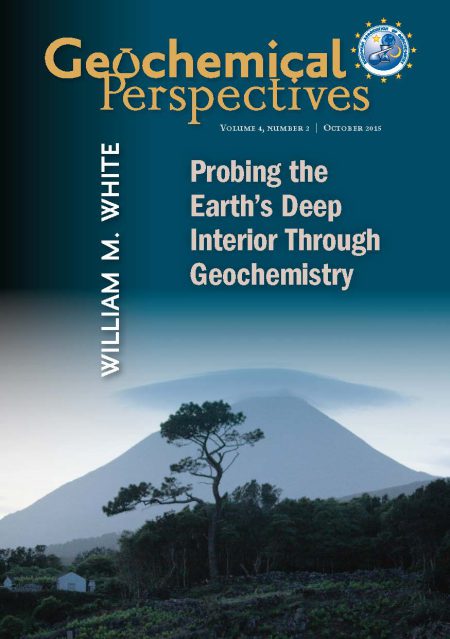
Probing the Earth’s Deep Interior Through Geochemistry
by William M. White1doi: 10.7185/geochempersp.4.2 | Volume 4, Number 2 (pages 95-251)
Abstract
Basaltic volcanism provides a window into the Earth’s mantle. Seeing through this window requires seeing through the processes of magma genesis and evolution that distort the view. Radiogenic isotope ratios, and to a lesser extent incompatible elements and stable isotope ratios, allow us to see through these distortions and infer the nature and evolution of various mantle magma sources. Geochemical studies of mid-ocean ridge basalts (MORB) reveal that the upper mantle was long ago depleted in incompatible elements through previous episodes of melt extraction, likely associated with crust formation. Oceanic island basalts (OIB) are the products of mantle plumes and hence provide us with a view of the deepest parts of the Earth’s mantle. These plumes can be divided into several genera, EMI, EM II, and HIMU, most of which contain several species. Little or no mixing is observed between these genera, but all mix with a prevalent mantle component, PREMA, that contributes to many if not all plumes. Although the mantle comprising plumes also show evidence of previous melt extraction events, the more prominent chemical signature is of material anciently recycled from the Earth’s surface through subduction of oceanic crust and sediment, subduction erosion, and foundering of lower continental crust. This is most unambiguously manifest in variations in stable isotope ratios that could only have been produced at or near the surface of the Earth. In addition to a recycled component, many plumes also contain a quite primitive component, manifested primarily in their noble gas isotope ratios. The primitive component seems most closely associated with PREMA.
In contrast to hot spot and mid-ocean ridge volcanism, subduction-related volcanism allows an assessment of the flux into the Earth’s mantle. It was apparent from early Pb isotope data that sediment was subducted along with oceanic crust, an observation later dramatically confirmed by the discovery of cosmogenic 10Be in subduction zone magmas. Because of this sediment, the flux into the mantle at subduction zones is more incompatible-element enriched than MORB. Although some fraction of this material is extracted into subduction zone magmas, a variety of approaches reveal that the flux into the deep mantle remains incompatible-element enriched. Other studies, particularly geophysical ones, indicate that this subduction flux is substantially augmented by subduction erosion of the overriding plate. Over Earth’s history these processes together with continental crustal founding may have delivered a volume of material equal to the present volume of the continents.
The discovery that all modern terrestrial rocks have an excess of 142Nd, which is the decay product of the extinct radionuclide 146Sm, compared to chondrites, reopens the question of the Earth’s composition. One important implication is that the concentrations of heat producing elements, U, Th, and K, may be 25 % or more lower than previously thought. Another implication is that the depleted source of MORB may constitute a very large fraction of the mantle, perhaps nearly all of it. On the other hand, the heat flow from the core may be substantially greater than previously thought. This implies that the lowermost mantle and the core-mantle boundary layer may play a dominant role in driving mantle convention, and ultimately all geologic processes. Geophysical evidence is revealing that the lowermost mantle is indeed a dynamic and interesting region. The challenge for mantle geochemists is to integrate their observations with those of geophysicists and progress is slowly being made in this respect.

